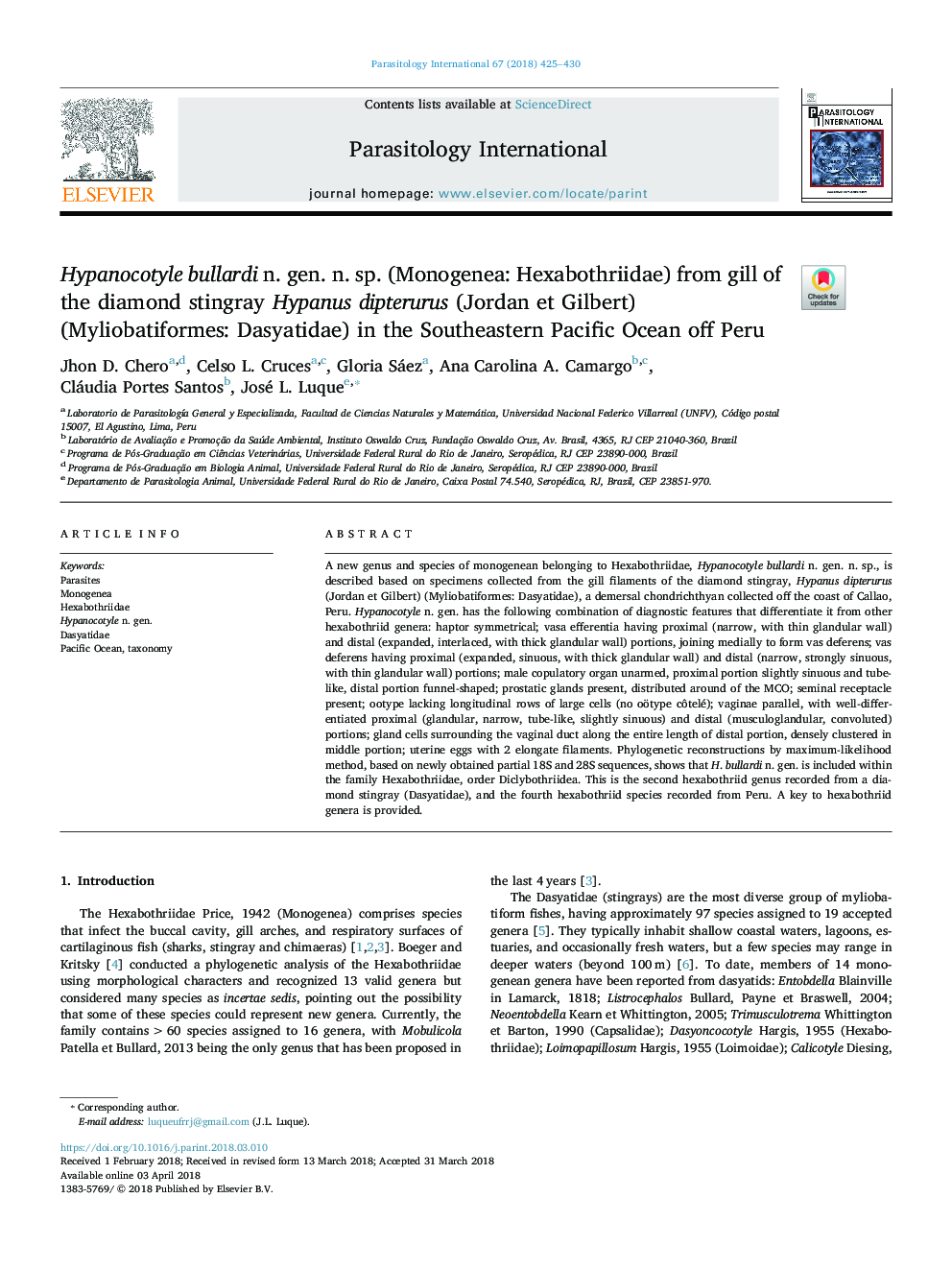| Article ID | Journal | Published Year | Pages | File Type |
|---|---|---|---|---|
| 8750510 | Parasitology International | 2018 | 6 Pages |
Abstract
A new genus and species of monogenean belonging to Hexabothriidae, Hypanocotyle bullardi n. gen. n. sp., is described based on specimens collected from the gill filaments of the diamond stingray, Hypanus dipterurus (Jordan et Gilbert) (Myliobatiformes: Dasyatidae), a demersal chondrichthyan collected off the coast of Callao, Peru. Hypanocotyle n. gen. has the following combination of diagnostic features that differentiate it from other hexabothriid genera: haptor symmetrical; vasa efferentia having proximal (narrow, with thin glandular wall) and distal (expanded, interlaced, with thick glandular wall) portions, joining medially to form vas deferens; vas deferens having proximal (expanded, sinuous, with thick glandular wall) and distal (narrow, strongly sinuous, with thin glandular wall) portions; male copulatory organ unarmed, proximal portion slightly sinuous and tube-like, distal portion funnel-shaped; prostatic glands present, distributed around of the MCO; seminal receptacle present; ootype lacking longitudinal rows of large cells (no oötype côtelé); vaginae parallel, with well-differentiated proximal (glandular, narrow, tube-like, slightly sinuous) and distal (musculoglandular, convoluted) portions; gland cells surrounding the vaginal duct along the entire length of distal portion, densely clustered in middle portion; uterine eggs with 2 elongate filaments. Phylogenetic reconstructions by maximum-likelihood method, based on newly obtained partial 18S and 28S sequences, shows that H. bullardi n. gen. is included within the family Hexabothriidae, order Diclybothriidea. This is the second hexabothriid genus recorded from a diamond stingray (Dasyatidae), and the fourth hexabothriid species recorded from Peru. A key to hexabothriid genera is provided.
Related Topics
Life Sciences
Immunology and Microbiology
Parasitology
Authors
Jhon D. Chero, Celso L. Cruces, Gloria Sáez, Ana Carolina A. Camargo, Cláudia Portes Santos, José L. Luque,
